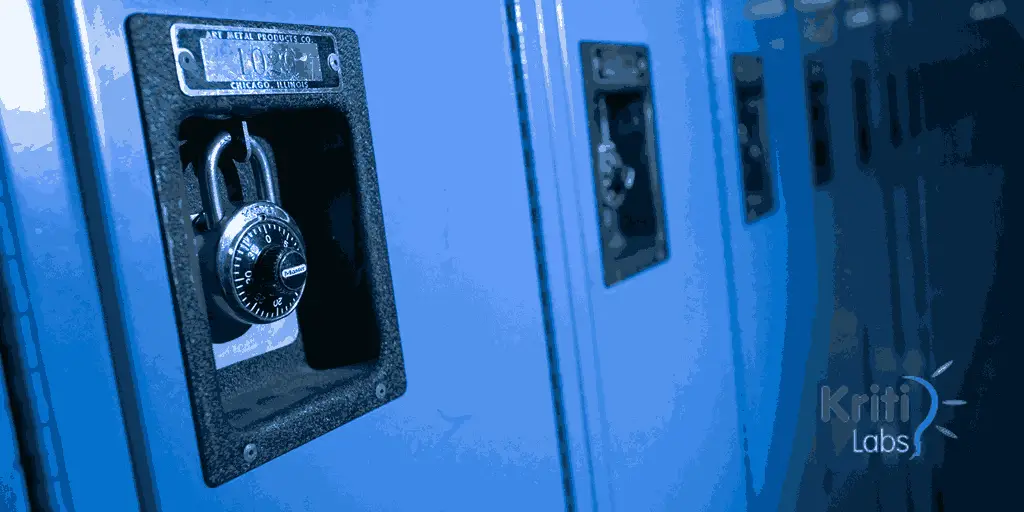In today's dynamic and flexible work environments, where hybrid working and hot desking have become the new norm, the need for lockable storage has significantly increased. With employees, contractors, and visitors flowing in and out of workspaces, it is essential to provide secure and flexible storage options for personal belongings and confidential documents. A robust locker management system can help organizations meet these demands, enhance convenience and efficiency, improve security, and reduce overall storage costs.
1. Flexible Use of Lockers
Rather than providing a dedicated locker for each individual, a locker management system allows for dynamic usage. By adopting this approach, organizations can optimize locker utilization and reduce the number of lockers required. With a flexible locker management system, you can:
- Enable individuals to use lockers only when needed, thereby reducing the overall number of lockers.
- Allow individuals to utilize multiple lockers simultaneously for situations like gym or cafeteria visits.
- Assign lockers for specific time periods, including permanent assignments or longer stretches for certain individuals.
- Provide lockers for visitors, contractors, and teams in addition to individual employees.
This flexible approach not only saves on space, management efforts, and costs but also offers convenience to users who can choose lockers in locations and positions that suit them each time.
2. Secure Various Storage Spaces
A comprehensive locker management system can be extended beyond traditional lockers to secure a wide range of storage spaces. Alongside lockers, organizations can use the system to secure filing cabinets, laptop storage, post boxes, medicine cabinets, and more. This becomes particularly crucial in hybrid working models, where valuable assets and sensitive information may be left vulnerable.
By integrating these storage spaces into the locker management system, organizations can have centralized control over access rights. This allows them to determine who has access to specific storage spaces, at what times, and under which circumstances. This enhanced security measure ensures the protection of confidential data and other valuable assets.
3. Keyless Access for Convenience
Traditional lockers often require individuals to carry physical keys, which can be inconvenient and easily misplaced. A high-quality locker management system eliminates the need for keys by offering keyless access options. Access control IDs, such as cards or virtual credentials on smartphones, can be used to unlock and lock storage spaces and lockers.
To further enhance convenience, advanced locker management systems can incorporate biometric identification, such as facial or fingerprint recognition, for secure access. This not only simplifies the user experience but also eliminates the hassle of issuing, managing, and replacing physical keys.
4. Integration with Physical Access Control
To streamline access management across an organization, it is beneficial to integrate the locker management system with the physical access control system. By using a single system to manage physical access to both spaces and lockers, organizations can enhance security and convenience.
For example, by integrating the locker management system with the HR system, access rights for lockers and storage spaces can be automatically assigned. This ensures that new temporary workers are granted access to relevant lockers and workspaces for the duration of their contracts. Furthermore, access rights can be tailored based on employee roles, such as granting emergency response officers access to medical cabinets or restricting equipment access during different shifts.
5. Robust Security Measures
Security is a top priority when it comes to locker management systems. It is crucial to select a system that not only provides the necessary functionalities but also ensures robust security measures. A modern locker management system that operates on an IP network should offer the flexibility and functionality required. However, it is equally important to ensure that the system itself is well protected.
A cybersecure platform forms the foundation of a secure locker management system. Additionally, individual locks should have tamper sensors to detect any unauthorized attempts to access storage spaces. By adopting such measures, organizations can prevent hackers from obtaining key data and compromising the entire physical access control system.
6. Streamlined Maintenance and Management
Managing a large number of lockers and storage spaces can be a time-consuming task. Organizations should look for a locker management system that simplifies maintenance and management processes. A web-based dashboard can provide a streamlined interface for administrators, enabling them to respond quickly to changes, requests, and incidents.
Additionally, a well-designed system minimizes management and maintenance tasks. For instance, if a storage unit or access card is not programmed, there is no need to manage programmers. Furthermore, wired systems eliminate the need for battery replacements, further reducing maintenance efforts.
7. Leveraging Data for Informed Decisions
An effective locker management system should offer robust tracking and reporting functionalities. This empowers organizations to gain insights, maintain control over access, and make data-driven decisions regarding the usage of lockers and storage spaces. With comprehensive tracking and reporting capabilities, organizations can:
- Identify individuals who accessed specific storage spaces in the event of a security incident.
- Analyze usage patterns to determine the need for additional storage in specific locations or departments.
- Monitor the status of storage spaces in real-time and remotely open, release, or block them to maintain security and efficiency.
By harnessing the power of data, organizations can optimize locker management and enhance overall security and convenience.
Conclusion
In the era of hybrid working and hot desking, a well-implemented locker management system is crucial for organizations to provide secure and flexible storage options. By adopting a flexible usage approach, securing various storage spaces, offering keyless access, integrating with physical access control, implementing robust security measures, streamlining maintenance and management, and leveraging data for informed decisions, organizations can maximize the benefits of a locker management system.
At KritiLabs, we offer an advanced Locker Management System that leverages cutting-edge E-locking technology to provide end-to-end security for your valuables. Our comprehensive solution encompasses smart locks, keyless access, advanced tracking, and monitoring capabilities. To learn more about how our locker management system can enhance your security and facilities management, get in touch with us or download our brochure.







